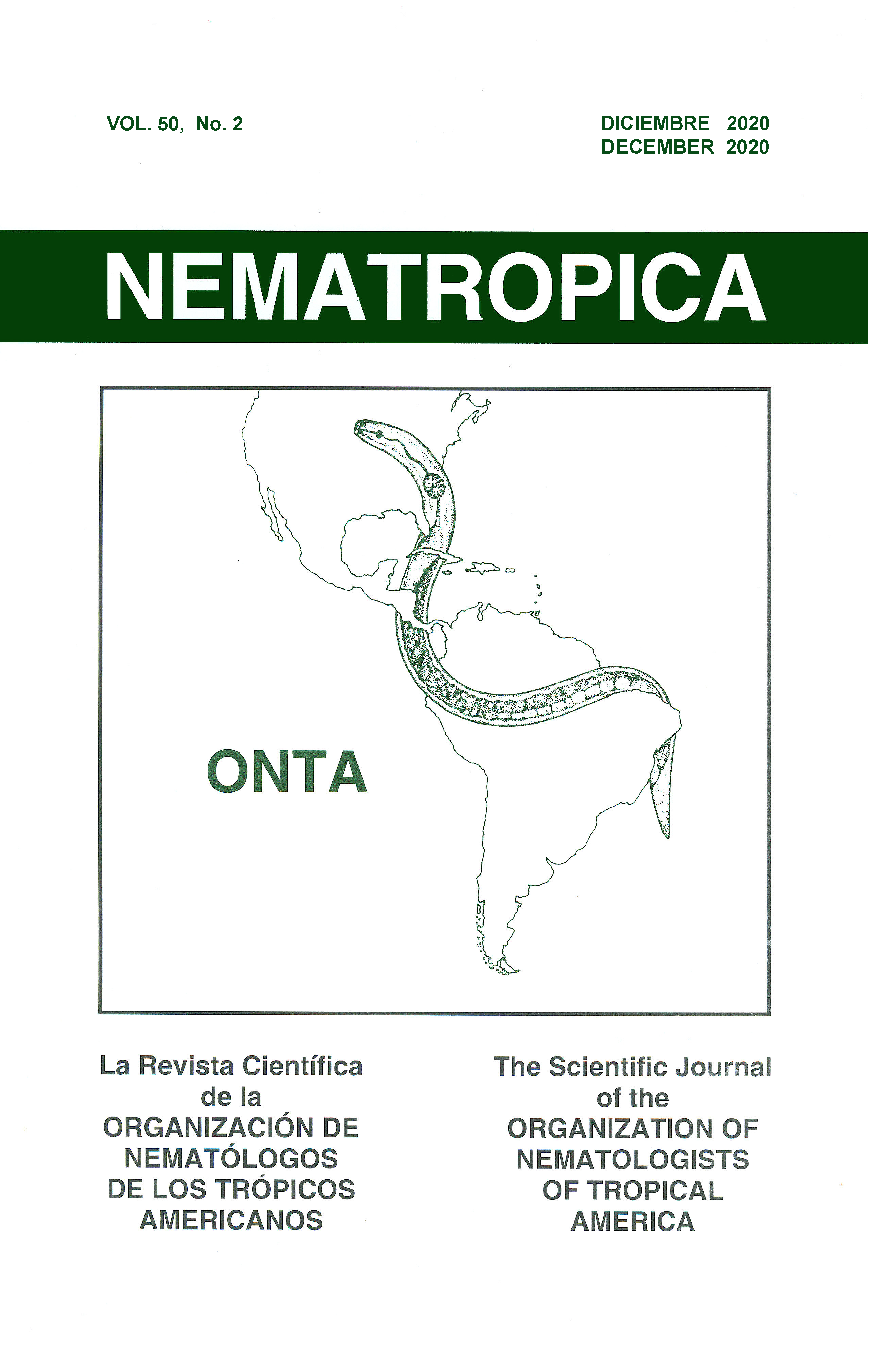PLANT-PARASITIC NEMATODES ASSOCIATED WITH PLANTAIN (MUSA PARADISIACA) IN TALAMANCA, LIMÓN, COSTA RICA
Abstract
Plantain is one of the most important food and commercial crops in the Huetar Atlantica region of Costa Rica. Plant-parasitic nematodes (PPN) are one of the major constraints of plantain production and are therefore a threat to food security. The present study was part of an investigation that was carried out in Talamanca, Limón, Costa Rica with the objective to quantify and identify the main PPN genera associated with plantain cultivation. Nematodes were extracted from a total of 76 samples; 63 from soil and 13 from roots of plantain collected from 10 smallholder farms. In terms of absolute frequencies of distribution, the most abundant PPN genus in soil was Pratylenchus, which was detected in over 76.9% samples, followed by Helicotylenchus (69.2%), Meloidogyne and Radopholus (61.5%). In the roots, Helicotylenchus (100%), Meloidogyne (90.5%), Pratylenchus (74.6%), and Radopholus (66.7%) were the most frequently detected genera. In general, frequency and population densities of PPN were high in comparison to other similar surveys. Overall, the data suggest that PPNs could pose a serious threat to plantain production in Costa Rica and that control measures should be further developed and implemented.

